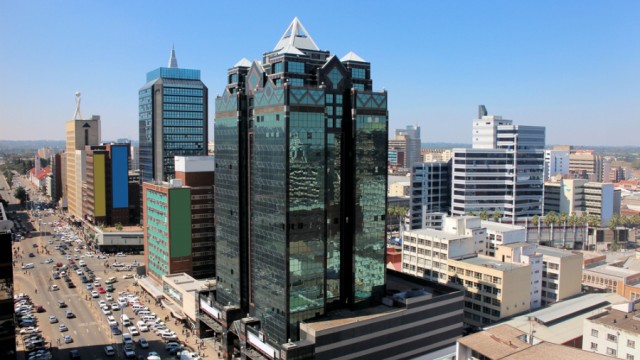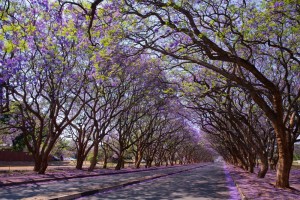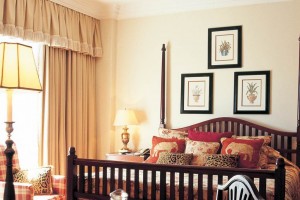Harare is not only the capital of Zimbabwe, but also a leading city in Africa for everything from business, to art, to shopping. So it should some as no surprise that it also happens to be one of the country’s most-visited cities.
Harare isn’t quite the African hub city on the level of Lagos or Johannesburg, but now that Zimbabwe is using the U.S. dollar as its currency — and a tenuous sense of political stability has returned — it’s starting to attract more global attention. More investment and infrastructure development is happening, and the tourism and hospitality industries are growing around it.
The metro area, which is home to around two million people, offers a wealth of opportunities for a visitor to eat, shop or soak up local culture, whether you’re there purely for pleasure, or if you’re looking for something to do in between business meetings.
Orientation
The city consists of a Central Business District (CBD), where most of the commerce takes place, plus elegant low-density suburbs that spread out from it like veins. This is where you’ll find eclectic boutiques, gourmet restaurants and high- energy night clubs. The city is particularly gorgeous in September when the jacaranda trees lining the wide boulevards bloom, splashing the city with dashes of royal purple.
Unlike a hectic city such as Lagos or Dar es Salaam, Harare is pretty much void of chaos (except at rush hour). It is very clean by African standards and is filled with modern buildings and polite citizens, and is also incredibly safe as far as African capitals go.
Attractions
Right in the CBD you’ll find the absolutely stunning Harare Gardens. Resembling a beautiful English-style garden, Harare’s largest park is a cheerful place to stroll during the day. Home to an island-like stand of rainforest and plenty of green patches where locals lounge with laptops or lovers on warm and sunny afternoons, it is the place to get professionally photographed in Harare. On a sunny afternoon you’ll see locals posing for photos, which industrious photographers shoot and print on the spot for around US$2.
The National Botanic Gardens is also a lovely spot to spend an afternoon. Sitting on 58 hectares just east of the CBD, it is a serene spot to pass an hour, filled with all sorts of diverse flowers and shrubbery that thrives in Harare’s near temperate climate. Wander through the park and you’ll also find most Zimbabwean plant species, as well as some specimens from other parts of Southern Africa represented.
If you love art, the National Gallery of Zimbabwe is home to rotating monthly exhibits showcase everything from contemporary local to pan Africa art in various mediums – everything from stone sculptures to masks, photography to oil paintings. The gallery was originally opened by Queen Elizabeth in 1957.
Shopping
Zimbabweans are some of the most talented artisans in Africa, famed for their high-quality and often cutting-edge craftsmanship and fashion sense. Here are few great boutiques to check out.
Dendera Gallery is located east of town off the Mutare Road in the Doon Estate. It does high-caliber Zimbabwean and African pieces including antique ceramics, gorgeous silver jewelry and modern baskets and carvings.
Kiki’s features some of the most unique Zimbabwean handicrafts you’ll find. Here the focus is on furniture, 90% of which is created by local artists. Check out the hand-painted porcelain pieces and the Shona wooden stools for something different.
If you’ve ever dreamed of owning couture but simply couldn’t afford it, don’t skip Zuvva in Sam Levy Village. The boutique sells ready-to-wear pieces by hot young Zimbabwean designer Joyce Chimanye, who is also a fixture at Zimbabwe Fashion Week. Using colorful African fabrics and designs, she shines at creating unique dresses and skirts for very reasonable prices ($60-150) that she will tailor to fit your body. Accessories like gorgeous cloth bags and timepiece costume jewelry make great gifts.
KwaMambo at 40 Cork Rd in Belgravia, south of the Avondale Shopping Center, has beautiful pieces by local artists – look for original paintings, unique metal sculptures and hand-painted ceramics.
Patrick Mavros boutique is located just east of Alexandra Park and is THE place to purchase one-of-a-kind silver necklaces, earrings and bracelets. The shop has drawn the attention of visiting celebrities, including Kate Middleton, the King of Spain and Bruce Springsteen, all of whom have purchased Mavros’ creations. The shop is 1km of Umwinsidale Rd, to get here follow the signpost to the studio and gallery at the end of Haslemere Lane.
Ros Byrne, also in the Doon Estate, sells gorgeous hand-painted fabrics like colorful pillow cases and linens, plus top quality pottery that has also been colored by an artist’s hand.
Harare also has great markets: Newlands Art & Craft Market, which sprawls in the space between Enterprise Road and the Newlands Shopping Center, is home to a large selection of stone, wood and metal creations; Avondale Flea Market, in the Avondale Shopping Center, just west of downtown, is held daily from dawn to dusk. This is where to scoop up clothing, local crafts, CDs and used books. Look for it on top of the old car park at the back of the shopping center. The Sam Levy Flea Market at the Sam Levy Village in Borrowdale is also worth checking out if you’re in town on a Sunday. Mugabe is also threatening to tear down Mbare, Harare’s most notorious slum that is also home to its most famous market, Mbare Market. Beyond fresh produce and soap and other local necessities, it features a good selection of baskets, plus the usual wooden giraffes and Shona sculpture.
Dining
For a traditional Zimbabwean meal, try Garwe, which is located in Eastlea, just east of the CBD. It serves traditional dishes like sadza, peanut butter kale and goat stew among other favorites in thatched roof environs. If you’re in the CBD after dark, hit up Stars, which is part of the Sheraton Rainbow Hotel. It is a classy club that has been popular for more than a decade, and plays a mix of the latest hip hop and house hits.
Hotels in the city often offer up some of the best dining and this is the case with the Crowne Plaza Monomotapa. Inside you’ll find Parkview Brasserie, which does buffet-style meals, is located on the main level, just past the African-themed main lobby. Le Francais (which just received a name change and menu re-do) is also on the ground floor and offers a Gallic-influenced menu and a swanky bar. The Aquarium Lounge Bar off the second floor pool deck – don’t miss the hotel swimming pool, with a stylish mosaic tile bottom – serves cocktails in a trendy black-matte floored and shiny metal bar space for after dinner discussions.
For a well-acclaimed restaurant, try Amanzi on Enterprise Road. A classy affair that serves international fare both on its lively outdoor patio or inside its colonial home, which is done up with gorgeous African décor and walls adorned with local art (that is for sale). Just be sure to book in advance, as seats are hard to come by.
Where to Stay
Harare has an impressive array of hotels to rest your head, and though many of them cater to business needs, you’re sure to find something that suits you. If you’re doing business in the city (as many visitors are) do check out Meikles, which is Harare’s most classy downtown hotel for doing business. Celebrating a century of continuous operation in 2015, the family-owned 12-story hotel has an air of exclusivity to it that other Harare hotel’s just can’t top – it is popular with visiting executives, dignitaries, and even the odd world leader or two (security is top-notch). The address is equally powerful: right in the heart of downtown, overlooking Africa Unity Square.
The Crowne Plaza Monomotapa is another excellent business option. More reasonably priced than the Meikles, it is managed by South Africa’s excellent Sun Hotel Group and part of the Intercontinental Hotels conglomerate. A four-star rated property like the Meikles, the Monomotapa has a coveted CBD locale. It also delivers professional service – not to the level of Meikles, but decent compared to other Harare properties – and a modern global vibe inside a unique concave shaped building. It also offers conference facilities, with seven dedicated meeting suites and the ability to host up to 250 people at a conference or reception.
For something more exclusive and a bit out of the way from downtown, definitely check out the Amanzi Lodge. Set in Highlands (a wealthier suburb east of town) Amanzi is home to sultry tropical gardens, the intimate five-star boutique property has plenty of space to stretch your legs. A spa, championship golf course, and lovely pool all add to the high-end appeal that allows you to mix business and pleasure fluently. The onsite restaurant is the best gourmet dining spot in the city. Amanzi is small, however, with just 16 rooms and suites, each very unique and themed after a different African country.
Excursions
If you can find people to join you, spend the afternoon with an orphaned cheetah at Wild is Life. Located out near the airport, this wildlife sanctuary takes in injured and orphaned animals. The guest experience, which costs US$70, invites you to share high tea, canapés and champagne service with the animals as the sun sinks, and allows you to help support the animals. Reservations are essential.
Located 7km south of Harare on the road to Bulawayo, the National Heroes Acre (107 Rotten Row) was designed with assistance by North Korea and is a somber memorial to the forces killed during the struggle for independence.
Getting There And Around
Harare International Airport (HRE) is the major hub for all international flights into and out of the country. There are direct flights from Addis Ababa, Cairo, Nairobi, and Johannesburg, and you can connect from other cities throughout Africa and Zimbabwe.
You can also take an overnight train from Bulawayo, or drive to Harare. While you can drive from neighboring countries, it isn’t recommended due to road conditions and border delays. If you want to take the slow route, there are buses that travel there all the way from Johannesburg.
Harare is not an easy city to navigate without a car — everything is very spread out, so renting one is advisable. There are rental offices at the airport and in the downtown CBD area. International drivers licensed are accepted.
Taxis, while not as abundant as in other cities, can easily be found and often fit as many as eight people inside. Be sure to negotiate a price before you head to your destination. There are also minibus taxis with frequent services through the central city and to the surrounding suburbs.
Safety
If you are driving around, be prepared for police roadblocks where officers will try to solicit bribes by saying something is “wrong” with your vehicle. It’s a good idea to carry cash on you at all times and just pay up, because you don’t want to get stuck for too long — or worse, get detained.
Walking around at night is not the best idea and should probably be avoided. It’s also illegal to walk or drive anywhere near the President’s palace after 6:00 p.m. — just a fair warning. If you go to Mbare market, bear in mind that this is not the safest part of town; it is best to carry only as much money as you want to spend, and go in a group — or better yet with a local if possible.
Essential Information and Links
Visas: Zimbabwe requires citizens of most countries (but not all) to obtain a visa either at the border/airport, or in advance. South Africa, Kenya and Hong King are among the exceptions. Here is a quick reference guide. Check with the Zimbabwean Embassy in your country before your trip for the most up-to-date information.
Location: Harare is located in the northeast of the country in Mashonaland, and is the capital and largest city in Zimbabwe.
Weather: The climate in Harare is considered a subtropical highland climate. The warmest months are September-November where the average highs are around (29C/83F), while the coolest months are June and July, with average highs of (22C/71F). The rest of the year is generally pretty comfortable year round. The warm wet season is November-March/April, and the dry season runs from April to August. The best time to travel to Zimbabwe is during the dry season, from April to October.
Money: Since 2009 the predominant currency has been the US dollar. The South African rand and Botswanan pula are also accepted many places. Larger hotels, restaurants and shops that cater to tourists will take credit cards, but you should have cash at hand for smaller establishments and markets. ATMs can be found in the CBD and the larger hotels.
Languages: English is almost universally spoken in touristed areas. Other common languages include Shona and Sindebele.
Fire Department & Ambulance: 04 783 981-4 or 993/4 (accessible only on Tel-One lines)
Police: 04 751 896/20
Hospitals:
- Avenues Clinic, Corner Mazowe Street/Baines Avenue, Tel: +263 4 251 180
- Harare Central Hospital (University of Zimbabwe): Lobengula Road, Tel: +263 4 664 695
- Trauma Centre Harare: 15 Lanark Road, Belgravia, Tel: +263 4 700 668





